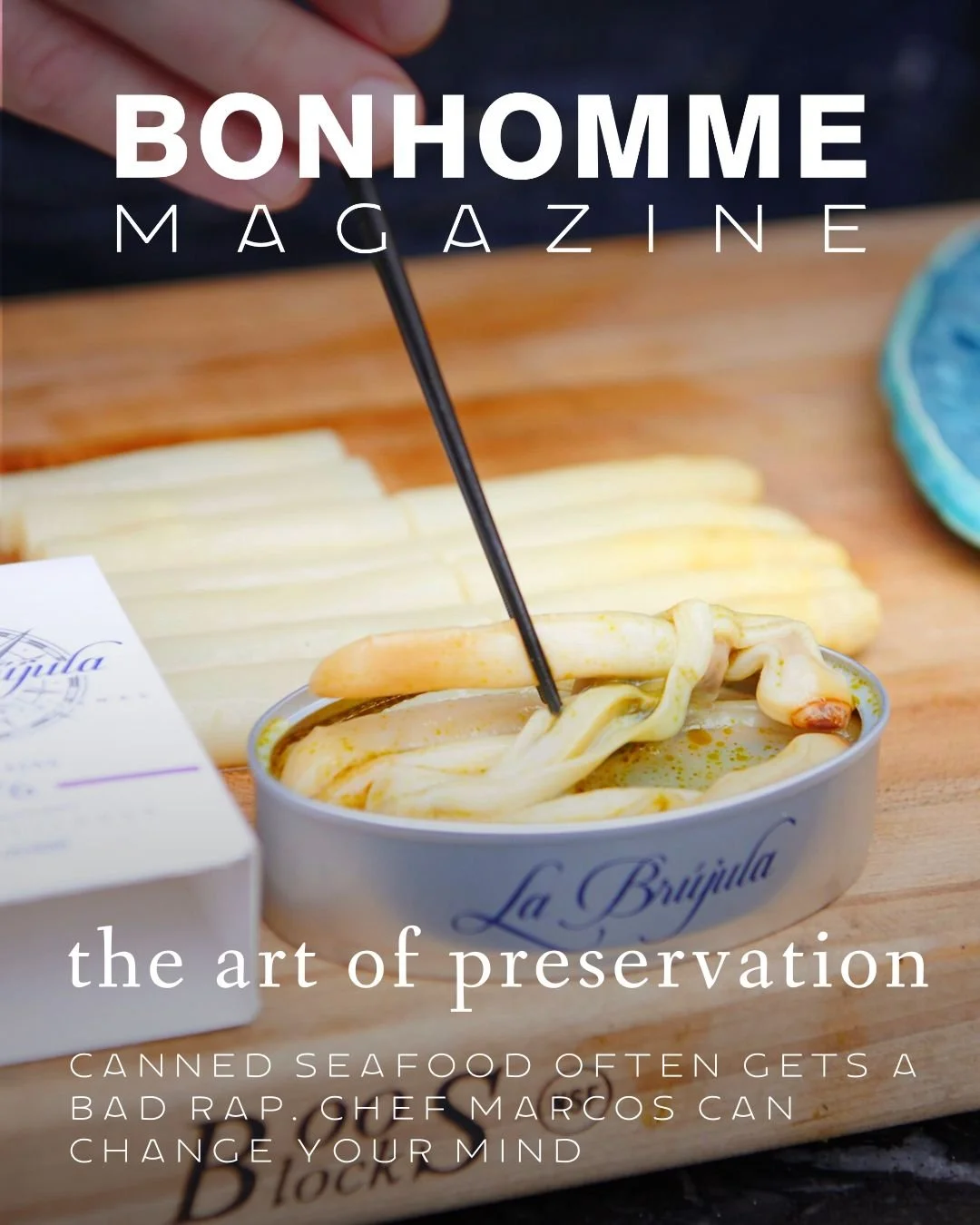The art of preservation: Canned seafood often gets a bad rap. Chef Marcos can change your mind
If ever there was a dish to convince conserva-phobes that these preserved tinned products are the real deal, it’s Navajas & Esparragos Blancos at Porto, a recent Michelin-star recipient.
At the West Town restaurant, Exec Chef Marcos Campos only utilizes conservas that meet his high standards of excellence for both taste and sustainability. For this dish, two exquisite conservas — razor clams from Galicia’s La Brújula, a passion project from one of Spain’s most rigorous and innovative gourmet food companies, and white asparagus from Navarra’s La Catedral, or LC as it’s known worldwide — are combined to create a unique and delicious culinary experience. Both of these seasonal products are perfect examples of the benefits of this centuries-old preservation technique, which offers the opportunity to eat these seasonal delicacies year-round from fisherman and the women of the sea who harvest by hand and feet to protect environmental sustainability and ensure that only mature perfect seafood is preserved.
“For me, this dish speaks about a lot of histories and connections of how we use natural salinity and brines from preserved ingredients to create a new combination of flavors while still respecting the artisan work behind them,” says Marcos. “As the most important preserved ingredient in the dish, we use the Galician razor clams, which come from la Ría de Muros e Noia, a unique place in the world where the highest quality of shellfish grow and are harvested and processed by hand using sea water from Galicia.”
Starting with razor clams as the inspiration, Marcos was looking to create a dish in which all of the main components are white. “For me, it's about the chromatism of white colors between the razor clam and the white asparagus, and how ingredients that look really alike can provide two different profiles of flavors and texture even coming from a can and a jar preserved for longer than 12 months,” he says.
The white asparagus conserva provided the perfect partner both for its color and creamy texture. ‘Meaty’ codium seaweed — often referred to as the ‘green bean of the sea’ — is combined with lemon juice, red onions, cilantro and olive oil. In keeping with Porto's ethos of not wasting anything, liquid from the tinned razor clams and fresh oysters, another Porto menu staple, are combined to make an espuma. Caviar provides a pop of texture, additional briny flavor as well as a glamorous finishing touch.
"At Porto, my inspiration starts with thoughtfully sourced local produce and imported seafood from the Atlantic coast of Spain and Portugal, chosen for their rare and sustainable qualities,” says Marcos. "To showcase and elevate their sublime flavors, I cook exclusively with live fire and employ a combination of ancestral and modern culinary techniques."







